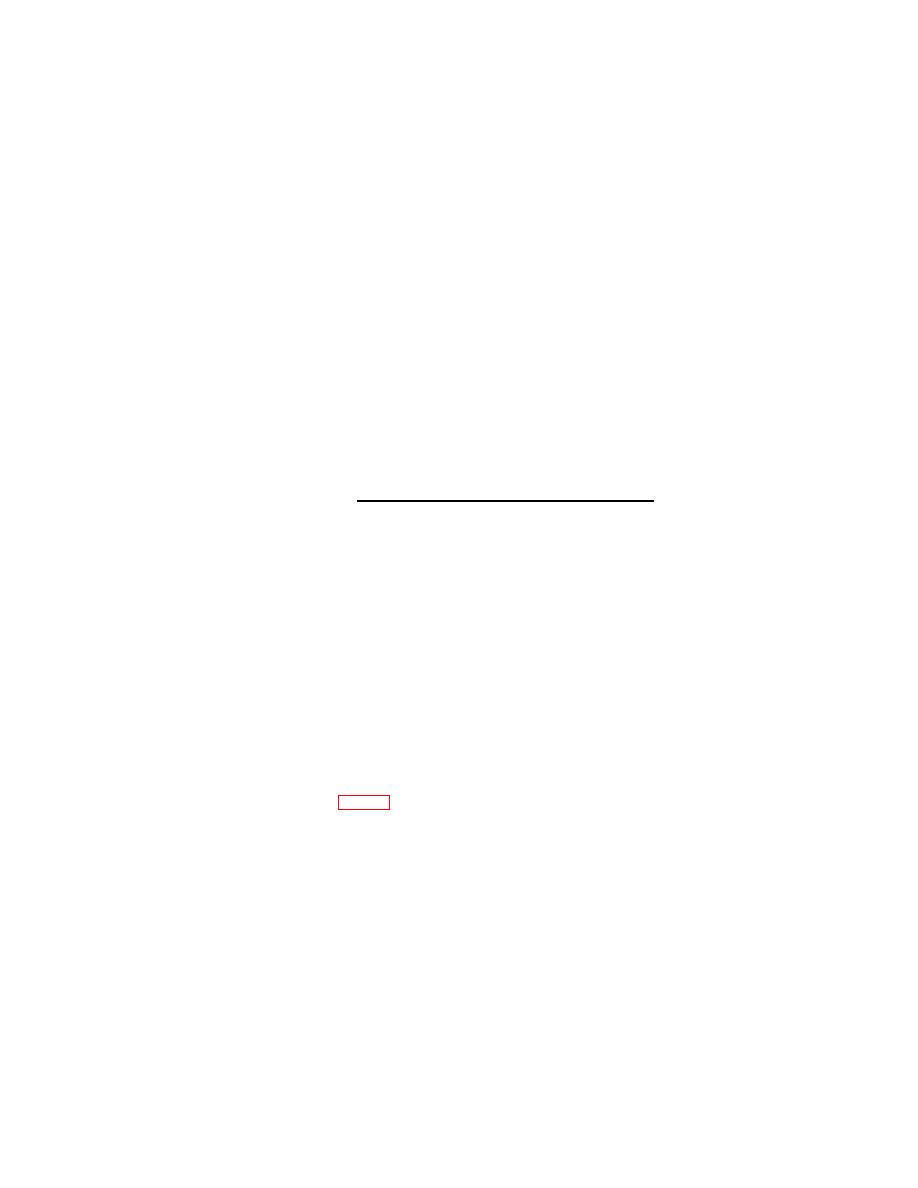 |
|||
|
|
|||
|
|
|||
| ||||||||||
|
|
 TM 94940-539-14&P
M. CYLINDER PRESSURE GAUGE
The press cylinder is equipped with a pressure gauge (which has a special dial) and is calibrated to record the tons of
force exerted by the ram. As well as the special calibration (required for various diameters of cylinders and sizes of
presses), the gauge is of the high pressure type, that is, for 0 to 15000 PSI, and should not be confused with ordinary low
pressure gauges. The following is an explanation of the calibration used on our model H40 press:
1A"
which is on area of 8.295 sq. in., therefore the piston will have a
the H40 cylinder has a bore or piston diameter of 3
thrust of 8.295 times the amount of fluid pressure applied to the cylinder, as indicated on a standard pressure gauge
calibrated in pounds per square inch (PSI).
Example: 40 tons = 80, 000 pounds thrust + 8.295 area = 9644 PSI fluid pressure applied to the cylinder or 9644 PSI
X 8.295 area = 80, 000 pounds or 40 tons.
N. TABLE WINCH
The table is raised and lowered by means of a mechanism comprised of a worm and gear, worm crank handle, and
cable drum. The only required attention is lubrication and proper adjustment of the cable lengths so that all table pin holes
will align simultaneously. Loosen set screw in cable drum to equalize lengths. Caution: after inserting table pins, back off
winch to slacken cables, thus avoiding breaking winch gear.
O. CAUSES AND CURES OF TROUBLES IN HYDRAULIC PUMP CIRCUIT
Normally very little trouble will be experienced with the hydraulic circuit and usually can be attributed to dirt or lack of
fluid. Cleanliness and the proper oil is an absolute requirement for proper operation. Also, all valve seats must have
perfect contact with their mating balls and the valve seats should be as narrow as possible.
The following is intended as a test procedure and cure for trouble in the system. If the problem is in the pump, it is
much easier, cheaper and faster to order an exchange rebuilt pump from our factory. These are sold on an exchange
basis and are minimal cost, FOB our plant, Los Angeles, California. Most sizes are in stock, and can be shipped
immediately, resulting in a minimum of down time. Be sure to specify model and serial number of press when ordering
pump unit.
1. If ram movement and low pressure can be attained by using the high speed pump, but pressure cannot be developed
by the high-pressure pump (smaller plunger), the most probable cause is that the pump is air bound. This is usually
caused by low oil level. This small diameter and short stroked plunger has little sucking ability.
To remove air from small plunger, use a wire or rod about I/e in diameter to hold the inlet check ball down
(compressing the spring under it) while the pump handle is stroked 10 to 12 times. The inlet check ball is located at
the bottom of the pump reservoir directly above and to the right of the small plunger when looking down into the
reservoir from the front of the press. The location of the inlet check ball is shown on the TANK INTERIOR drawing,
page 12. If air bubbles rise while pumping, this will confirm the fact that the plunger was air bound. Now pump the
press to maximum pressure to remove a small amount of remaining air trapped under the relief valve ball. Refer to
HYDRAULIC SCHE- MATIC CIRCUIT, page 4, for clarification of instructions. The low pressure pump (large plunger)
has the ability to prime itself so it does not require removing air.
6
|
|
Privacy Statement - Press Release - Copyright Information. - Contact Us |